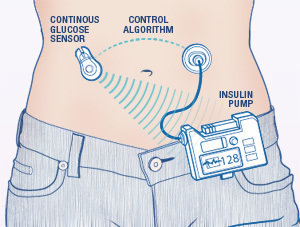Elasticity and Revenue
Christopher Makler
Stanford University Department of Economics
Econ 50: Lecture 17
Elasticity
Why Elasticity?


Notation
"X elasticity of Y"
or "Elasticity of Y with respect to X"
Examples:
"Price elasticity of demand"
"Income elasticity of demand"
"Cross-price elasticity of demand"
"Price elasticity of supply"
Perfectly Inelastic
Inelastic
Unit Elastic
Elastic
Perfectly Elastic
Doesn't change
Changes by less than the change in X
Changes proportionally to the change in X
Changes by more than the change in X
Changes "infinitely" (usually: to/from zero)
How does the endogenous variable Y respond to a
change in the exogenous variable X?
(note: all of these refer to the ratio of the perentage change, not absolute change)
Using Elasticities
- Suppose the price elasticity of demand is -2.
- This means that each % increase in the price
leads to approximately a 2% decrease in the quantity demanded - Example 1: a 3% increase in price would lead to a ~6% decrease in quantity
- Example 2: a 0.5% decrease in price would lead to a ~1% increase in quantity
- These are approximations in the same way as if \(dy/dx = -2\) along a function, increasing \(x\) by 3 would cause \(y\) to decrease by approximately 6.
General formula:
Linear relationship:
Using calculus:
Multiplicative relationship:
Note: the slope of the relationship is \(b\).
Elasticity is related to, but not the same thing as, slope.
This is related to logs, in a way that you can explore in the homework.
This is a super useful trick and one that comes up on midterms all the time!
Demand Elasticities
How much of a good a consumer wants to buy, as a function of:
- the price of that good
- the price of other goods
- their income
We can ask: how much does the amount of this good change, when one of those determinants changes?
Own-Price Elasticity
What is the effect of a 1% change
in the price of good 1 \((p_1)\) on the quantity demanded of good 1 \((x_1^*)\)?
no change
perfectly inelastic
less than 1%
inelastic
exactly 1%
unit elastic
more than 1%
elastic
-
How does \(x_1^*\) change with \(p_1\)?
- Own-price elasticity
- Elastic vs. inelastic
Three Relationships
Price Elasticity of Demand or Supply: \(\epsilon = \frac{\%\Delta Q}{\%\Delta P}\)
[poll question coming up...]
pollev.com/chrismakler

Cross-Price Elasticity
What is the effect of an increase
in the price of good 2 \((p_2)\) on the quantity demanded of good 1 \((x_1^*)\)?
no change
independent
decrease
complements
increase
substitutes
-
How does \(x_1^*\) change with \(p_1\)?
- Own-price elasticity
- Elastic vs. inelastic
-
How does \(x_1^*\) change with \(p_2\)?
- Cross-price elasticity
- Complements vs. substitutes
Three Relationships
Income Elasticity
What is the effect of an increase
in income \((m)\) on the quantity demanded of good 1 \((x_1^*)\)?
decrease
good 1 is inferior
increase
good 1 is normal
-
How does \(x_1^*\) change with \(p_1\)?
- Own-price elasticity
- Elastic vs. inelastic
-
How does \(x_1^*\) change with \(p_2\)?
- Cross-price elasticity
- Complements vs. substitutes
-
How does \(x_1^*\) change with \(m\)?
- Income elasticity
- Normal vs. inferior goods
Three Relationships
Supply Elasticities
Think about all the things we calculated for the function \(f(L,K)=L^{1 \over 4}K^{1 \over 4}\)
LONG RUN
SHORT RUN
LONG RUN
SHORT RUN
What is the output elasticity of conditional labor demand in the short run and long run?
Intuitively, why this difference?
In the long run, the firm uses
both labor and capital to increase output;
in the short run, it only increases labor.
Revenue for a Firm
Profit
The profit from \(q\) units of output
PROFIT
REVENUE
COST
is the revenue from selling them
minus the cost of producing them.
Revenue
We will assume that the firm sells all units of the good for the same price, \(p\). (No "price discrimination")
The revenue from \(q\) units of output
REVENUE
PRICE
QUANTITY
is the price at which each unit it sold
times the quantity (# of units sold).
The price the firm can charge may depend on the number of units it wants to sell: inverse demand \(p(q)\)
- Usually downward-sloping: to sell more output, they need to drop their price
- Special case: a price taker faces a horizontal inverse demand curve;
can sell as much output as they like at some constant price \(p(q) = p\)
Demand and Inverse Demand
Demand curve:
quantity as a function of price
Inverse demand curve:
price as a function of quantity
QUANTITY
PRICE
If the firm wants to sell \(q\) units, it sells all units at the same price \(p(q)\)
Since all units are sold for \(p\), the average revenue per unit is just \(p\).
By the product rule...
let's delve into this...
Total, Average, and Marginal Revenue
The total revenue is the price times quantity (area of the rectangle)
Note: \(MR < 0\) if
The total revenue is the price times quantity (area of the rectangle)
If the firm wants to sell \(dq\) more units, it needs to drop its price by \(dp\)
Revenue loss from lower price on existing sales of \(q\): \(dp \times q\)
Revenue gain from additional sales at \(p\): \(dq \times p\)
Marginal Revenue and Elasticity
(multiply first term by \(p/p\))
(simplify)
(since \(\epsilon < 0\))
Notes
Elastic demand: \(MR > 0\)
Inelastic demand: \(MR < 0\)
In general: the more elastic demand is, the less one needs to lower ones price to sell more goods, so the closer \(MR\) is to \(p\).
Econ 50 | Spring 2023 | Lecture 17
By Chris Makler
Econ 50 | Spring 2023 | Lecture 17
Elasticity and Revenue for a Firm
- 253



